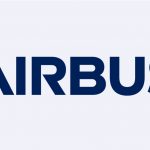MROs Deploy New Workforce Strategies As Labor Gap Worsens
MRO industry stakeholders have long felt the pressure of the technician shortage, but as maintenance demand ramps up and companies struggle to meet their growing workforce needs, the changing labor landscape is presenting new challenges.
U.S.-based maintenance provider AAR Corp. said in its recent 2023 Mid Skills Gap Report that the traditional technician career pathway—in which new graduates start at repair stations before progressing to airlines—is becoming less common as companies struggle to find qualified talent. The report says major airlines are beginning to hire and train mechanics right out of school rather than following the natural career progression, which is causing problems for independent MRO providers.
“I kind of think of AAR as the minor leagues of baseball,” explains Ryan Goertzen, vice president for workforce development at the company. “We get technicians and grow their experience, usually on a customer’s airplane, and then they eventually go to work at the customer. The problem today is you can’t do that because there are not enough people. You ultimately end up hurting yourself as a major air carrier because you’re hurting your MRO provider.”
Considering this changing trend, Goertzen stresses the importance of workforce collaboration between MROs and airlines, such as making flow-through agreements and leveraging an airline’s brand to attract new talent.
AAR currently has about 200 open positions at its U.S. repair stations, and it is hoping to create up to 600 new positions in the next few years. So it has needed to pursue new hiring avenues, including seeking out international talent from Latin America. “We’ve had some really good luck using the United States-Mexico-Canada agreement to get some technicians from Mexico, as an example, into and throughout our various MRO facilities,” Goertzen says.
AAR’s report notes, however, that work visa restrictions in the U.S. have limited its efforts to improve this situation, compared with more flexible immigration policies in Canada that include a pathway to citizenship. The company currently has technicians from 29 countries working at its Canadian repair stations.
Goertzen says AAR recently partnered with the Teamsters Union to speak with legislators and immigration reform experts on Capitol Hill about ways to spur change in federal policy that would make it easier for U.S.-based MRO providers to hire international talent. He stresses that the idea is not to recruit cheaper labor or replace American workers but to fill gaps created by the shortage of homegrown technicians. Goertzen also notes that hiring skilled talent from abroad would enable MROs to accelerate hiring of new graduates.
“For every highly skilled technician I bring in, I can usually bring in something like 3 to 5 relatively new technicians to grow along this pathway together,” he says. “The argument is that we would actually accelerate U.S. technician growth by having some more skilled people to leverage in the facility.”




